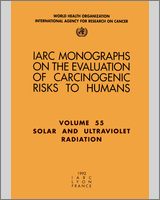| Lawn grass, summer, Maryland, California and Utah | 2.0–3.7 |
| Lawn grass, winter, Maryland | 3.0–5.0 |
| Wild grasslands, Vail Mountain, Colorado | 0.8–1.6 |
| Lawn grass, Vail, Colorado | 1.0–1.6 |
| Flower garden, pansies | 1.6 |
| Soil, clay/humus | 4.0–6.0 |
| Sidewalk, light concrete | 10–12 |
| Sidewalk, aged concrete | 7.0–8.2 |
| Asphalt roadway, freshly laid (black) | 4.1–5.0 |
| Asphalt roadway, two years old (grey) | 5.0–8.9 |
| House paint, white, metal oxide | 22 |
| Boat dock, weathered wood | 6.4 |
| Aluminium, dull, weathered | 13 |
| Boat deck, wood, urethane coating | 6.6 |
| Boat deck, white fibreglass | 9.1 |
| Boat canvas, weathered, plasticized | 6.1 |
| Chesapeake Bay, Maryland, open water | 3.3 |
Chesapeake Bay, Maryland, specular component of reflection
at Z = 45 °N | 13 |
| Atlantic Ocean, New Jersey coastline | 8.0 |
| Sea surf, white foam | 25–30 |
| Atlantic beach sand, wet, barely submerged | 7.1 |
| Atlantic beach sand, dry, light | 15–18 |
| Snow, fresh | 88 |
| Snow, two days old | 50 |
